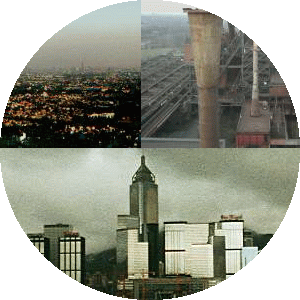 > ENC Master > Climate Encyclopaedia > Climate in Cities > basics
> ENC Master > Climate Encyclopaedia > Climate in Cities > basics
 |
|
|
|
Climate in citiesBasics |
|
Since the 19th century, cities have grown intensively, especially in the 20th century. The high concentration of large number of buildings in relatively small urban areas modifies various climatic elements, e.g. air temperature or wind speed and direction. However, there are many natural factors controlling urban climate, like latitude, relief, land use and the presence of water bodies.
|
|
Also human activity has impact on urban climate, mainly industry and transportation. Both of them are concentrated in urban areas and both deliver large amounts of various air pollution. Air pollution has negative impact on natural environment, economy and human health. The effects include e.g. smog and acid rains. There are many regions in the world which are endangered by air pollution, for example so-called "Black Triangle" located in the area of Poland, Germany and Czech Republic.
|
1. Air pollution due to human activity- What is air pollution?
|
2. Urban climate- Factors controlling urban climate |
3. Acid rain- What is acid rain? |
|

